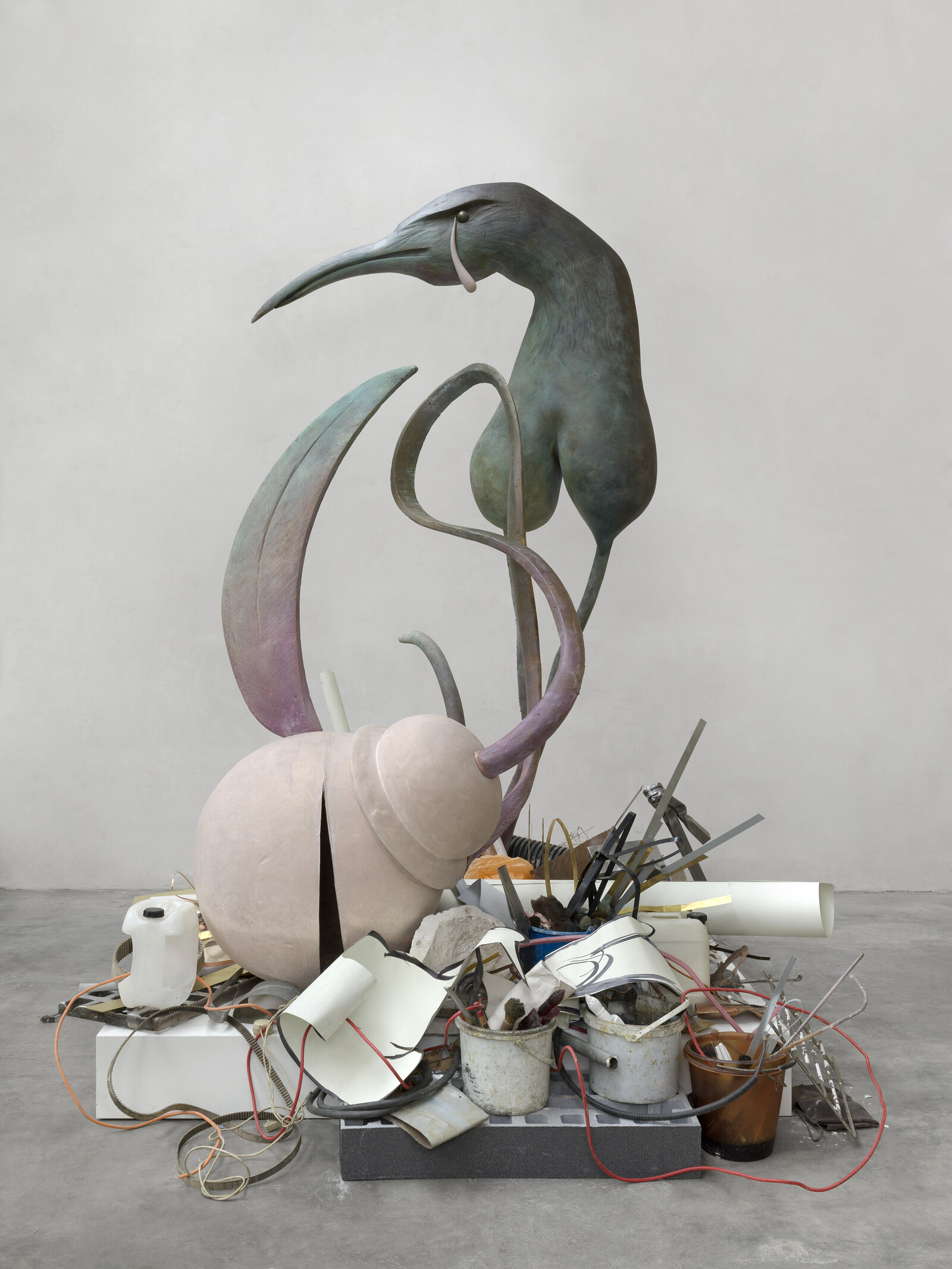Wet Job
June 11–October 16, 2022
Middelheimlaan 61
2020 Antwerp
Belgium
T +32 3 288 33 60
Middelheim Museum is pleased to present Wet Job, the first solo exhibition by artist Camille Henrot (b. 1978) in Belgium. The exhibition is the first of its kind to focus on the artist’s practice in sculpture and brings together close to 40 works produced over the last decade in an expansive outdoor setting. In the context of this exhibition, Wet Job has multiple and evolving meanings: it refers to the labor of breastfeeding and breast pumping (think “wet nurse”) at the same time as it evokes the end of life (“wet work”), the fluidity of identity, and the sometimes messy nature of human relations. It is particularly striking to consider the artist’s choice to use bronze, one of the most time-honored, durable materials, to capture the fleeting impermanence of human experience.
With more than one publicly accessible entrance, the grounds of Middelheim Museum offer multiple entry points and trajectories throughout Henrot’s oeuvre, which include works from the series Overlapping Figures (2011), Desktop Series (2013–2014), Monday (2016), System of Attachment (2018–2021) and Wet Job (2021–2022). Presented in both indoor and outdoor spaces of Middelheim Museum, Henrot’s works engage directly with their environment. She states, “I didn’t want the sculptures to overpower the landscape, and thought instead that my work could occupy space in the way that natural bodies would—that they could exist alongside a rabbit, a cow, a mushroom, a stone.” Working together with the museum team and city gardeners, Henrot selected wildflowers that would be left to grow freely over the course of the five-month long exhibition.
At the heart of Henrot’s sculptural practice is an impulse to attribute shapes to the liminal experiences of bodies and slippages beyond the self. Henrot’s hybrid figures—neither human nor animal nor plant-like in form—exist in a state of perpetual becoming. Always suggesting the capacity to (d)evolve, they seem to ease into their own metaphysical contradiction. System of Attachment (2018–2022), Henrot’s largest series of sculptures to date, run wild throughout the exhibition, especially concentrated in the labyrinthine Hortiflora. Inspired by the way we attempt to understand the world before we have words—through touch and taste—the series is a prolongation of the artist’s interests in the sensual basis of knowledge.
Complemented by new works developed especially for Middelheim Museum, Wet Job offers a rare opportunity to revisit a sweeping range of the artist’s existing oeuvre in relationship to an ever-evolving, active practice. Camille Henrot’s sculptures emphasize the delicate equilibrium between thing and object, and the mutual generation of bodies, words and shapes.
About Camille Henrot
Camille Henrot (b. 1978 in Paris, lives and works in Berlin and New York) is recognized as one of the most influential voices in contemporary art today. Inspired by a playful research process, Henrot works in a multiplicity of media, including film, drawing, painting, sculpture and installation. Inspired by literature, second-hand marketplaces, cartoons, social media, self help and the banality of everyday life, Henrot’s work captures the complexity of living as both private individuals and global citizens in an increasingly connected and over-stimulated world. In 2013, Henrot received widespread critical acclaim for Grosse Fatigue (2013), for which she was awarded the Silver Lion at the 55th Venice Biennale. In 2016, she was given the Carte Blanche at Palais de Tokyo in Paris, where she presented the major exhibition Days Are Dogs. Henrot has had numerous exhibitions worldwide, including at the New Museum, New York; Fondazione Memmo, Rome; Tokyo Opera City Art Gallery, Japan and National Gallery of Victoria, Melbourne. Other upcoming solo exhibitions in 2022 include Kunstverein Salzburg, Austria, and the Munch Museum in Oslo.
The artist has made the exhibition together with curator Pieter Boons, and is grateful to the entire team of the Middelheim Museum for the collaboration on this project. The exhibition was realized with the generous support of kamel mennour and Hauser & Wirth.
Text by Léa Trudel
Edited by Jacob Bromberg



